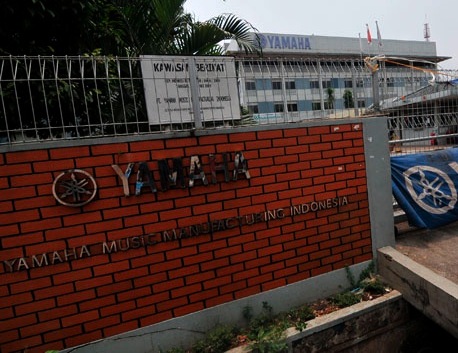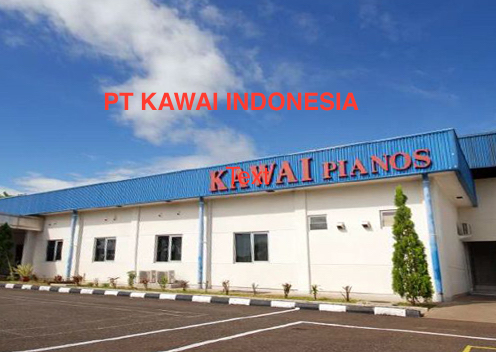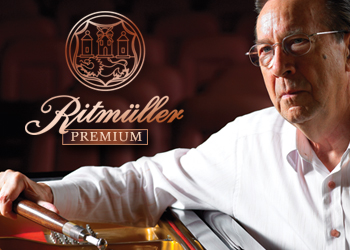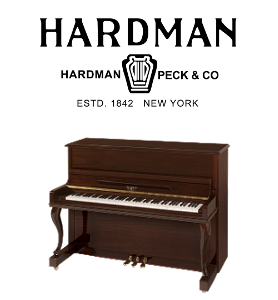好萊塢鋼琴公司: 鋼琴購買手冊 Piano Buyers Guide – by Hollywood Piano
06/19/2018 好萊塢鋼琴公司
Piano Buyers Guide – by Hollywood Piano
Baldwin ChinaWhether you’re new to playing pianos or you’ve been playing for years, if you haven’t looked at the market for pianos, you’re in for a surprise. While piano manufacturers and dealers like to focus their marketing on the timeless quality of acoustic pianos, the industry itself is in a major state of change. The value of the dollar, especially against the euro, has made the price of European pianos volatile. At the same time, pianos from Asia, especially from China have dramatically improved in quality – with an emphasis on dramatic. Japanese piano makers have shifted a giant percentage of their production to both China and Indonesia and even some of those pianos that say made in Japan are actually partially made in Indonesia and China and then finished in Japan.

Finally American Piano companies have chosen to compete in a variety of ways. The Nashville based Baldwin piano company moved the majority of their manufacturing off shore keeping their time honored recipes for grand piano materials and their time honored upright piano designs. The Mason & Hamlin company made a huge investment in America making their piano more advanced with space age action materials that will out last us all. The other major American piano company Steinway & Sons was sold yet again this time to a hedge fund manager who made his fortune in the sub-prime housing market of the late 90’s. But market changes are only one part of the story. The Internet has completely changed how people research and buy their pianos. In particular, the Net has created some major research points, such as Piano World, the the bi-annual book and online resource pianobuyer.com and to a lesser extent, The Blue Book of Pianos. (We’vPT Yamahae found the pianobuyer.com site has the most accurate piano pricing information while the Bluebook of pianos is either out of date or completely inaccurate and clearly is not intent on serving the public with the most up to date information.)

The Bottom Line: Whether you’re a new player looking for your first piano, an experienced player looking to PT KAWAIupgrade, or one of the largest piano dealers in the country, you have to keep up with a dramatically-altered landscape for pianos. The Piano Buyer’s Guide is Hollywood Piano’s contribution to helping our customers understand how to buy a piano in today’s market. It’s also our way of showing our customers the extent to which we have kept up with those changes, so that they can feel comfortable that we are providing them with the top choices at each segment of the market.

Understanding The Piano Buyers Market: The Quality Value Level, The Premium Level, Luxury Level
As we have said, the market for pianos has changed from even five years ago. For example, if you’ve heard that Asian pianos made in China, Korea and Indonesia are inferior in quality, that’s now a myth. Over the last decade, two important changes have taken place. First, the major Chinese and Korean manufacturers have all established relationships with world class piano designers from both America and Europe. These designers have completely revamped many scale designs within their lines and in some cases the entire line such as Lothar-Premium-logo1Ritmuller designed by the legendary Lothar Thoma and Weber/ Young Chang redesigned by the respected American designer Del Fandrich. Second, European and American piano manufacturers have either opened their own factories or established joint ventures and OEM manufacturing relationships with Chinese and Korean piano manufacturers, which has transformed the industry from regional to global.

Virtually all major Asian manufacturers have improved their manufacturing techniques and quality control significantly. There is also such a free interchange of parts that it is now common for pianos to be assembled in Asia with high quality parts made in America or Europe. In turn, this has also led to a substantial increase in the quality of parts made in Asia. It’s also common for parts or partially finished pianos from China to be shipped to Europe and then completed by European Masters in their home factories. The same is true for Japanese manufacturers shipping pianos from Indonesia to Japan then doing some finishing in Japan and then marking the piano as made in Japan. The end result as Larry Fine author of the pianobuyer.com says is that there are now no bad pianos being made today and his rating of yesterday are a map of the piano market today, not an actual quality rating as it once was years ago. As long as you are buying from a reputable source, you can expect to get at street prices a good entry level upright piano at just under $3,000, and an entry level baby grand piano under $7,000. Quality, furthermore, improves from there as the prices go up.

The Piano Shopper’s Price-Performance Value Curve
Buying a piano has always been about getting the best piano you can for the price you pay. In the vernacular, it’s getting “the best bang for your buck.” At every segment of the piano market there are piano brands that exemplify this saying.
Improved Low Priced Pianos: Let’s look at this from another perspective. The world’s finest pianos still come from names, such as Steinway & Sons, Mason & Hamlin, Grotrian-Steinweg, Estonia, Steingraeber etc. The price for these pianos starts at $40,000 and up for a baby grand to $100,000 and up for concert grands. To take one example, if you compare a Steinway & Sons Model “S” baby grandsteinway_model_m_piano priced at about $63,200 to an low priced Ritmuller Performance Series piano priced at $10,000, there’s no question that the Steinway & Sons is a better piano. However, the lower priced pianos have improved in quality to such a degree that it is questionable whether that Steinway is really a six times better piano. While it’s not likely that someone who can afford a Steinway would buy an entry level piano, the point we’re making is that lower priced pianos from Asia are no longer a weak part of the market.

New Premium Piano Mid-Level Market: This same Price-Performance Value Curve exists at a new “mid-level premium” segment of the market that has emerged in the last few years. Many Chinese manufacturers, for example, are now making pianos with scale designs from top American and European designers and high quality parts sourced from both America and Europe. These pianos have created a new mid-level in the range of $6,000 to $10,000 for verticals and $12,000 to $30,000 for grands. The quality is amazing, especially when you compare them to much higher-priced pianos from America, Japan and Europe. In our opinion, this segment of the market is giving birth to what you we call the world piano, which is a collaboration of high-quality design and parts from different parts of the world. It may be designed in America or Europe, and manufactured somewhere in Asia with parts from America, Europe and Asia. The pianos that compete in this categorBaldwin BP178y directly against higher priced pianos made in Japan, America and Europe include Brodmann, Eduard Seiler, Hailun, Kayserburg/Ritmuller Premium Series and Baldwin. Of this group we’ve selected Baldwin, Ritmuller and Brodmann.

The Brodmann and Ritmuller capturing the great warm European sound and the Baldwin the traditional American sound exemplified in American pianos like Steinway & Sons and Mason & Hamlin. All three US companies use the American piano materials recipe which includes an inner and and outer rim of hard rock maple. The difference is since Baldwin makes their piano off shore the prices per size are 66% less or one third the price of a Steinway and around 50% less and half the price of a Mason & Hamlin.
The High End: There are also standout values at the higher end of the market. In American pianos the clear extra value piano is Mason & Hamlin. Like Steinway it’s hand built in the USA using the same rim wood material, hard rock maple. It actually uses more wood than the comparable sized Steinway making it more costly to build. But a new Mason & Hamlin costs up to 40% less than a new Steinway! Mason & Hamlin’s WNG action will also outlast the Steinway because it is made form carbon finer and not wood. One of the best examples of extra value in European pianos is the Estonia, which is made in the tiny country of Estonia that is nestled between Finland and Russia. An Estonia sells for about 35% less than better-known European brands, like Bosendoerfer, Bluthner, or Bechstein, yet many people consider it to be every inch their equal. In higher priced European pianos the Grotrian is the clear stand out for musical excellence in a European hand made piano for about the price of an American Steinway. In our opinion, there will always be a high end of the market for discriminating buyers who want the absolute best and are willing to pay for it. While this segment of the market has always been dominated by a few American and European firms, primarily from Germany, Austria, and Italy, we believe that a select few pianos from other countries from both Europe and Asia will eventually break into this market. We can already see it happening with the Estonia.
Great New Sources Of Piano of Information
In the past, people learned about pianos through contact with piano dealers, and with a small number of teachers and technicians. Today, the Internet has completely changed how people acquire information about pianos. Every dealer and manufacturer is expected to have a website. More importantly, independent sources of information are now available that make it much easier to find comparative information about pianos.
In particular, there are three main sources that are widely used: The Piano Book now known as the pianobuyer.com released bi-annulally by Larry Fine, The Blue Book of Pianos, and Piano World. There are dozens of lesser less credible websites and a number of sellers nationwide who provide interesting though sometimes inaccurate information.

The Blue Book of Pianos: The Blue Book of Pianos is a source of information on both new and used pianos. If you’re looking for a used piano, it has listings of the serial numbers of virtually every piano manufactured by age, so you can determine when a piano was manufactured. Today, the Blue Book of Pianos is available online. Blue Book also has a listing of prices. One warning about the Blue Book is the site does not keep up with the rapid changes in pricing in the market place and many of the retail pricing is not accurate. For the most up to date MSRP it is always best to contact the piano manufacturer or refer to the pianobuyer.com.

The Piano Book and PianoBuyer.com website by Larry Fine: In 1987, an enterprising piano technician, Larry Fine, published The Piano Book, which was a guide to understanding and buying both new and used pianos. Today, The Piano Book has morphed into the bi-annual pianobuyer.com
The pianobuyer.com has become almost like a bible in the industry. Available on line for free and in soft cover book on Amazon.com or from the publisher’s website, it is well worth the money if you’re considering a new or used piano. The pianobuyer.com includes excellent descriptions of how pianos are made, and has numerous tips about how to go about researching and buying them.
The Pianos Book’s Ratings: The Piano Book’s ratings are worth discussing separately. They have become the equivalent to the piano buying public as the J.D. Power quality rating for automobiles or a Consumer Reports rating of quality.
This ratings according to Mr. Fine are not ratings at all but rather a map of the industry based on pricing, dividing pianos into three overall categories: Performance-Grade, Intermediate Grade and Consumer-Grade. Performance Grade has four categories the other two have three levels.
Unlike JD Power’s or Consumer Reports’ ratings, it’s important to understand that the piano ratings are a map of the industry based on pricing and Larry Fine’s opinion, which is created by consulting with a network of piano technicians. It is not based upon extensive surveys of actual users, which is how J.D. Power creates its quality ratings, or by a systematic testing of products, which is how Consumer Reports creates its ratings. Furthermore, the Acoustic & Digital Piano Buyer is accepting advertising while the other consumer guides for automobiles do not.
In short, the rating structure is highly subjective in nature, and more than anything else, represents the general market buzz about piano models and manufacturers, with all its inaccuracies and biases. As such, while it has an overall validity, any specific make or model can vary in actuality by a category or two, and the consensus among many professionals is that some pianos are completely miss-categorized.
Furthermore, not only is the barrier between Good Quality Performance-Grade pianos and Upper Level Consumer-Grade pianos becoming more and more blurred as high quality pianos from Asian manufacturers catch up to their more expensive European competitors, but also the quality level of Mid-Level and Entry Level Consumer-Grade pianos is also increasing significantly as Asian piano manufacturers invest heavily in improving their piano designs and manufacturing quality.
Piano World:Anyone researching pianos on the Net eventually ends up on Piano World, which is a series of forums on pianos that attracts manufacturers, dealers, technicians, and piano players worldwide. Piano World was started in 1997 by Frank Baxter, a computer programmer who also loves pianos.

Today, it is a website that has classified ads and numerous forums, including seven main forums on piano topics, including Piano Forum, Pianist Corner, Pianist Corner – Non-Classical, Piano Teacher’s Forum, Adult Beginner’s Forum, Piano Tuner-Technician’s Forum, Digital Pianos – Synths & Keyboards, and Composer’s Lounge.
If you’re looking for a new or used piano, you would go to the Piano Forum. We suggest that you “lurk” (just read the posts) for awhile to understand how the bulletin board operates, but eventually you’ll want to start a thread about the pianos you’re researching.
The people on the board are amazingly helpful. Quite literally, Piano World transforms the piano buying experience from a solitary venture into a group experience. While you’ll discover that nobody can tell you what piano you should buy, you’ll get good advice about how to go about finding the right piano for you. In particular, you’ll find out what people in similar situations to you decided to do.
Today’s Piano Marketplace
As we’ve said, today’s marketplace is hotly competitive on a global scale. Nevertheless, the market for acoustic pianos is not expanding. Instead, it is slowly contracting because of competition from other forms of entertainment, and from competition from digital pianos.
Issues for Manufacturers: Competition today is almost relentless. Asian companies, in particular, have taken over the lower end of the marketplace, and are threatening to take over the middle tiers as well. The increasing value of the euro, furthermore, is sending manufacturing costs skyrocketing in Europe, which has translated to huge price increases for pianos made in Europe. This relentless competition is causing piano manufacturers worldwide to change their strategies. Both American and European firms are increasingly developing relationships with Asian firms by sourcing parts and by having brands of pianos manufactured in Asian plants. Western European companies, furthermore, are also doing the same in Eastern Europe, which has much lower wage structures. The Asian firms are also opening their doors to top designers from both Europe and America, so that most of the pianos made in Asia today were designed as part of a worldwide collaboration.
Emergence of A Worldwide Market: The trend-line is inescapable. The major names in pianos are not going out of business. They are going global. Until salaries equalize themselves globally, most of the pianos designed by American or Western European companies will be mohler Thommamanufactured in Asia and to a lesser extent Eastern Europe. These pianos will then be shipped to their respective home countries for a final round of prepping, which is a critical part of the manufacturing process.

While there will always be a high end of the market in which pianos are designed and manufactured in their home countries, the number of pianos in this category will get smaller and smaller. It wouldn’t surprise us, for example, to see a manufacture of Tier 1 vertical and baby grand pianos shift production to the former Eastern Europe or Asia, although parlor and concert grands would likely still be made at home.
Stencil Pianos: Today, a precursor of this worldwide market is taking place with certain brands of “stencil” pianos. A “stencil” piano is one that does not have the name of the factory’s owner on the piano. While some in the industry has placed somewhat of a negative stereotype on so-called stencil pianos, it is unfair when the stencil is the brand name of a major piano maker. In the world of automobiles Lexus, Acura, and Infiniti are stencil automobiles because they are manufactured by Toyota, Honda, and Nissan, respectively. Nobody would consider them somehow inferior. Basically, there are three types of stencil pianos: OEM, OEM for a distribution company, and branded. OEM stencil pianos are manufactured by one company for another. For example, Steinway has contracted with Kawai to make the Boston line of pianos, and with Pearl River to make the Essex piano.
In general, most OEM stencil pianos are made in Asia. Branded stencils are manufactured in a factory owned by the manufacturer, but the manufacturer does not place its own name on the piano. There are two main reasons why a manufacturer might do this. First, many manufacturers perceived that there would be a bias in the marketplace if it placed its name on the fallboard. Both Chinese and Korean manufacturers, for example, were concerned that American and European buyers would not buy a piano with an Asian name, so they purchased the rights to the names of well-known pianos from America or Europe that were no longer in business. Second, the manufacturer may be trying to create different brand names at different parts of the marketplace, which is what the Japanese auto manufacturers did when they went into the luxury market for cars. Toyota created the Lexus brand because it felt that it would be difficult to sell Toyota brand in competition with Mercedes, BMW, and Audi.
Evolution of Stencil Brands: Not so long ago many stencil brands almost deservedly had bad reputations made as a cheap entry level product sometimes as the house brand of a piano retailer, stencils in today’s market have a very different reality since as Larry Fine says in the “pianobuyer.com” there are no bad pianos being made. The real question today is who stands behind the brand name on the fallboard, whether the manufacturer has the financial muscle to survive today’s economy in a hotly-competitive marketplace. What joint ventures the manufacturer may have with a Japanese, European or American company.

Some grand old American brand names have been re-born as “world pianos”. Take Hardman for example, a venerable respected brand that was reborn some 20 years ago by America’s largest independent piano distributor North American Music. Their manufacturing partner is a company that spent 20 years in a joint venture with Kawai of Japan. These pianos represent some of the finest values in the piano market saving from 25 to 40% over their name brand counterparts of similar size. Often the OEM piano has better specs than the higher priced name brands products when compared to that name brand’s entry level pianos costing at retail more. Why is that? In the name brand products you have to pay for levels of corporate management, salaries and marketing that the OEM products don’t have.
The Piano Buying/Shopping Process
The best advice we can give piano buyers in today’s market is to first determine your need and then determine a budget that will meet that need. It’s also wise to get or read pianobuyer.com to understand the pricing structure of the market. The more informed you are the better decision you’re going to make. We also strongly recommend going to Piano World to read the Piano Forum. Even if you don’t post yourself, you’ll find some valuable information. As you start to zero in on two or three models, you’ll likely discover threads on those same models with interesting discussions about them. Be careful of incorrect and inaccurate web information. The internet while a useful tool is also a place where there is plethora of misinformation. Don’t accept everything you read as facts.
In the shopping process be weary of those who use scare tactics to keep you from buying one brand over another. We hear of shoppers who are told something like XYZ brand falls apart. XYZ brand is made of inferior wood. XYZ brand will not last. Folks we are in a connected age where these kinds of purposeful misrepresentations can be easily debunked. Simply search it on google, join a piano forum and ask questions of the members. In the end trust yourself to know what you like and not worry about what someone else likes especially those selling a different product. Sound is subjective. Get the instrument that sings to you. Be extra careful of those who claim they are the good guys and others are the bad guys. Usually theses people portray themselves as experts but if you look into their credentials and claims you’ll find them to be highly exaggerated.
The Bottom Line
The bottom line is that today’s piano marketplace is radically different from even five years ago.
The manufacturers are rapidly evolving a worldwide industry, while piano buyers can educate themselves to an unprecedented degree. In today’s economic climate, we also recommend choosing brands from companies with strong financial backing. Let’s face it. Nobody wants to buy a piano from a dealer or manufacturer who isn’t around to back up their warranty.
At Hollywood Piano, we are embracing this new reality. We encourage you to explore our web site, which is filled with valuable information, and to come by in person to talk pianos with us, and to play the piano brands we’ve assembled to meet the needs in today’s marketplace which we strongly believe to be some of the best values in each of their respective categories.
